Bukit Lawang – an adventure in the jungle
Our journey in Indonesia started with an adventure in the jungle in the north of Sumatra, where we wanted to meet the rare and extraordinary orangutans.
We reached Medan on a hot afternoon and took the public bus from the airport to the city center. The exciting ride, that took about 1 hour and for which we paid only 1.23 €, made us quickly understand what traffic in Indonesia means.
While the ride was kind of scary and the road bumpy, the trip was a great opportunity to speak to new people. We met two travelers from France and one from Sweden, whom we joyed later on the same day for a walking tour in the city, together with Lia, a lovely girl from Couchsurfing that offered to show us the neighborhood and introduce us to the local cuisine. Alexi, JB and Claudine were the names of the other three travelers with whom we quickly became friends and shared contacts so we could meet them again during our journey in Indonesia.
Getting to Bukit Lawang
We decided to go to the jungle already the next morning, but the drive to Bukit Lawang proved to be a more difficult task than expected. As we found out the day before, transfers were overpriced everywhere and the official information about transportation was poor and not very helpful. We found out more by reading reviews on travel forums, where we found out that the ride from Medan to Bukit Lawang should cost between 40,000 to 80,000 IDR (2,30 – 4,79 €). Unfortunately, as many travelers reported, the journey can be much more costly and dangerous because local criminal gangs sometimes harass tourists and force them to pay additional money. Apparently, their main targets are solo travelers and single women.
Finally, we decided to take a Car to Buji through the GRAB app and from there we took a bus ride to Bukit Lawang. We paid for the GRAB 5 Euro from Medan Center to Binjai Super Mall, where we were told that the public bus would stop and where these gangs won’t be present, as police officers took care to maintain public order. The bus was actually a van (look for red and orange color) and we paid for the ride 3 € (50,000 IDR) per person. The journey was faster than expected and honestly quite scary as the driver knew no speed limit. Two hours later we arrived at the bus station in Bukit Lawang. Here, a nice gentleman came up to us offering to bring us to our accommodation for another 20,000 IDR. We refused politely, as it was not worth paying that amount for 1.5 km, but when he offered us 10,000 IDR we agreed on the deal. Cars are not allowed to drive close to the village, so locals will offer travelers a ride for a spicy price. There is, of course, the option to walk, but after more than two hours in a crowded minivan and a hot sun above your head, a transfer by rickshaw or scooter might seem like a good idea. Just don’t forget to bargain as you will most probably be asked to pay more than the regular price.
Arriving in the village
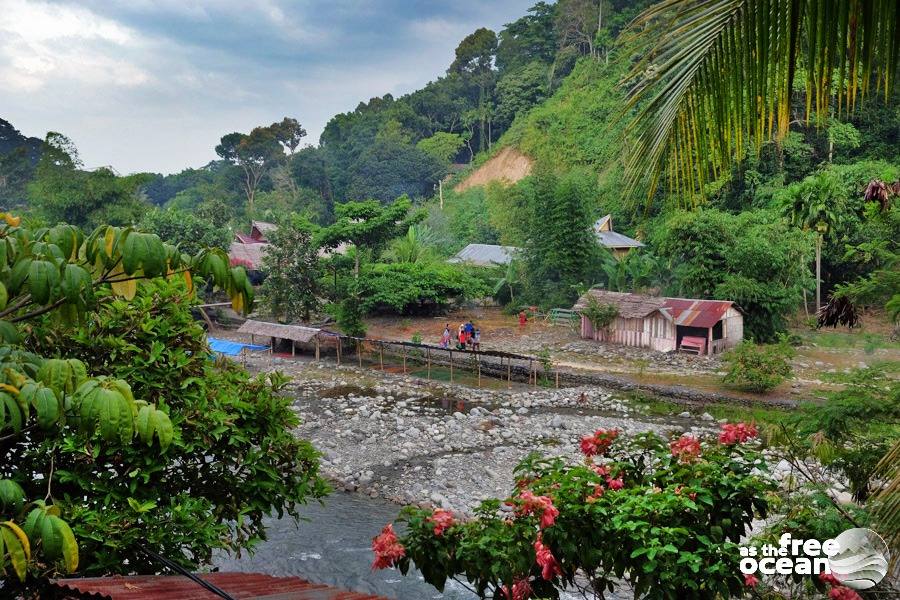
At the tourist information point, where the Becak (the Indonesian type of rickshaw) let us out, there was a person waiting for us. Our host’s brother welcomed us and took us to his office. He told us that their hostel was overbooked due to the holiday (end of Ramadan) and we couldn’t go to our originally booked accommodation, but he had an alternative to this problem. He offered us to book the jungle tour with him and as a bonus, he would arrange a better accommodation option till the time when we will be back in the village, at no additional cost.
The whole situation seemed rather odd, but we wanted to take a tour anyway and prices were standard regardless of whom we would have booked with, so we agreed on taking the tour with him. We also liked his approach to nature. We were assured that the guides have a license and that nature and animals would be respected and not be disturbed in any way.
Unfortunately, in Bukit Lawang, not all tour operators are on the side of nature, because the tourists want to have a close encounter with orangutans. It is sad to think that there are many people who do not realize that these wild animals are threatened with extinction and that being able to still see them in the wild is a rare opportunity. That’s why we ask you: If you are going on a tour, always enquire about the tour operator and make sure that nature, humans and animals are always respected, and not just in Indonesia but anywhere in the world.
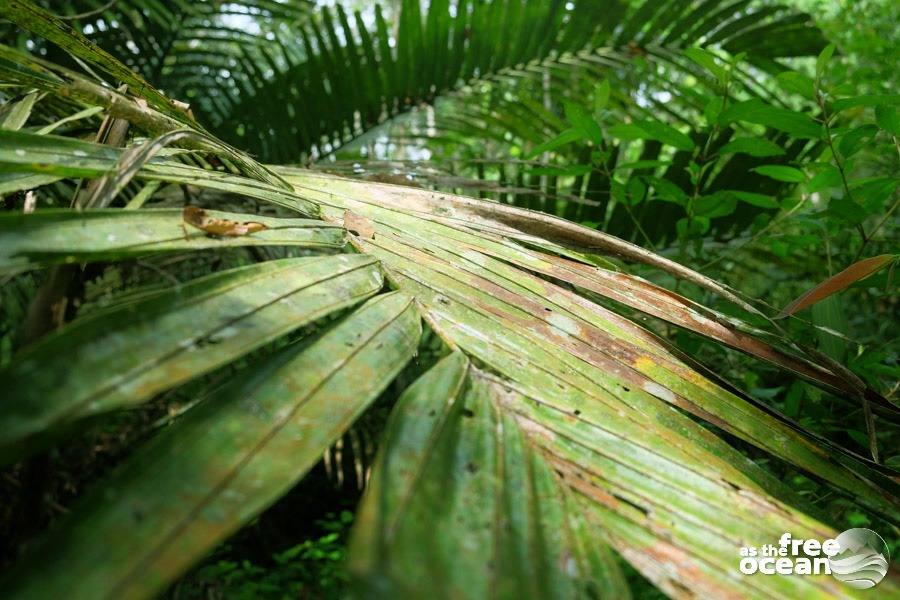
The cost of the tour for a 2 days jungle trek and overnight stay at the camp, including meals and river rafting back to the village was 89 euros per person. We found it to be very expensive, but this cost was matching the one from our research on the Internet. As I mentioned before, prices are standardized by the local authority, so unless you take a bigger package of services, it would be hard to bargain.
So far, so good. We gladly moved into our accommodation and spent the rest of the day walking around and later preparing ourselves for the upcoming jungle trek.
Jungle trekking and orangutans
The following morning we started at 08.00 o’clock and were introduced to our guides – Walli and Cacao, two brothers that made our two days in the jungle feel extraordinary pleasant. We were a small group of 6 persons: Alex, a Swiss couple, two Englishmen and me.
Before entering into the dense jungle, we crossed a rubber plantation where we could see how rubber is extracted from the bark of the tree before being processed. The trek continued deeper and deeper into the forest. Constantly we had to take short breaks to recover from the burning heat, even during the early hours of the morning. The two guides told us a lot about their home, the jungle, the plantations and the orangutans.
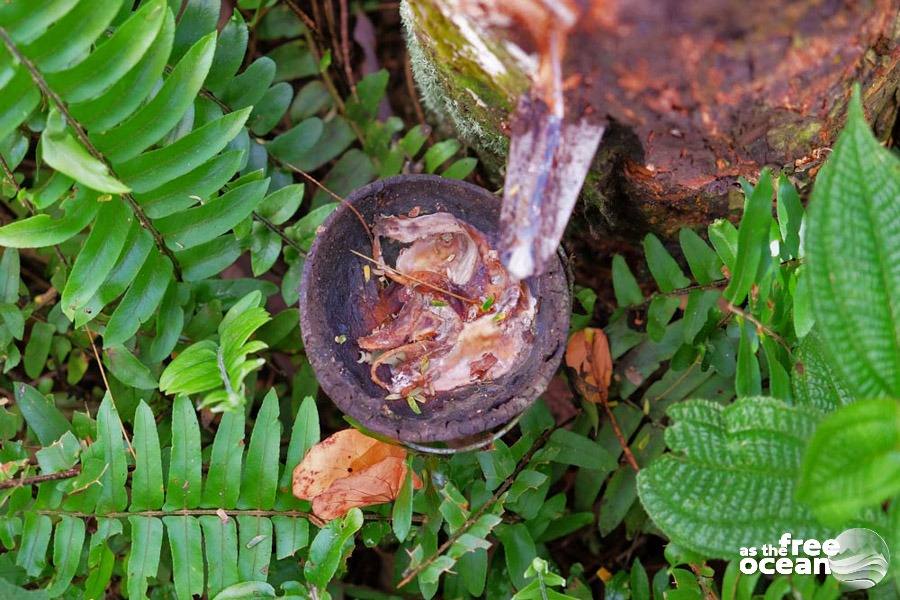
After a while, we saw another group of tourists watching something in the trees: an orangutan mom with her baby. What a wonderful view! Quietly, we approached the tree to observe not just the orangutans, but also the members of the other group being noisy and acting disrespectful towards the animals by trying to attract them with food and approaching them more than it was necessary in order to get their perfect “selfies”. Sadly, most of them were locals that obviously didn’t value enough the natural treasures of their own country, but were more focused on their personal entertainment.
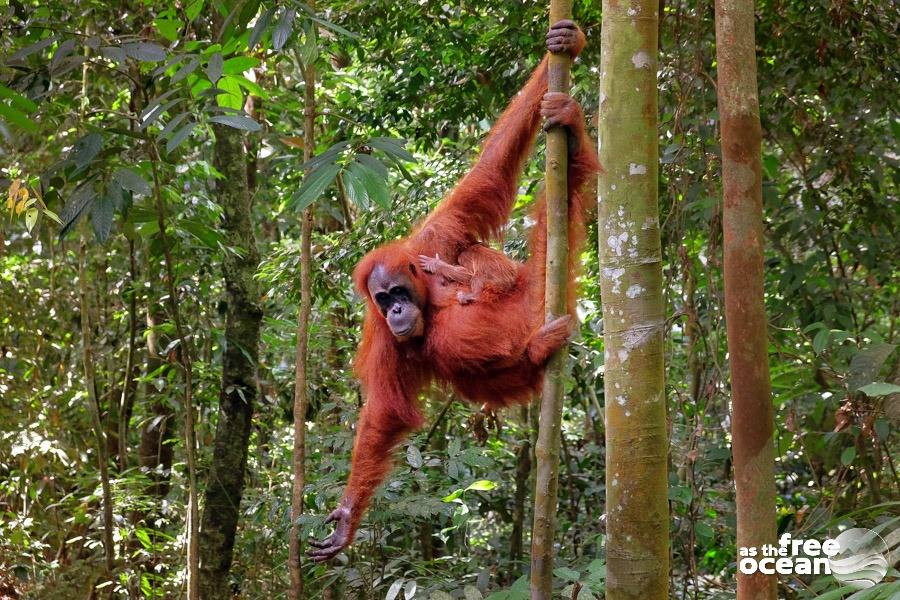
We noticed also the nest of those orangutans. As our guides explained to us, orangutans rarely climb down the trees due to the presence of predators on the ground, so they spend lots of time building nests whenever they want to move from one place to another. And because it happens quite often that they move during one single day, they mastered the ability to construct their nest incredibly fast and easy. The nest that we saw wasn’t empty and by the time we got closer to it, a really big and old orangutan, that certainly weighed over 100 kg, climbed down the tree. We all stopped and quietly watched him pass a few meters away from where we were standing. It was an incredibly beautiful experience, but not the only one that day. During our trek we could observe different monkeys, birds, beetles and plenty of insects.
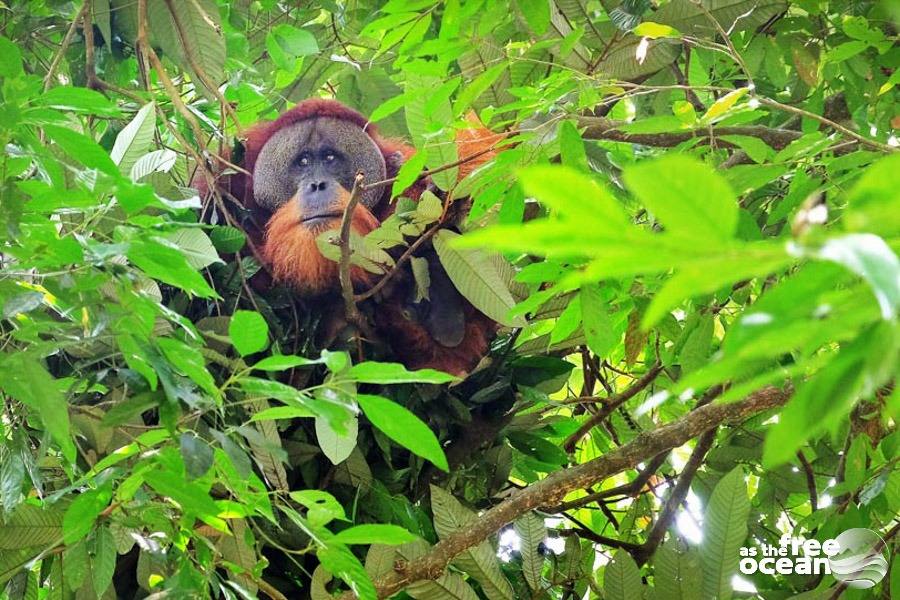
The path to the camp felt long because we always took long breaks, which were needed in order to reduce noise on one hand but also to enjoy the beautiful nature that was surrounding us. For the lunch break, Walli and Cacao prepared rice in a banana leaf together with fresh fruits, which we ate with our hands or with crackers that served also as a spoon.
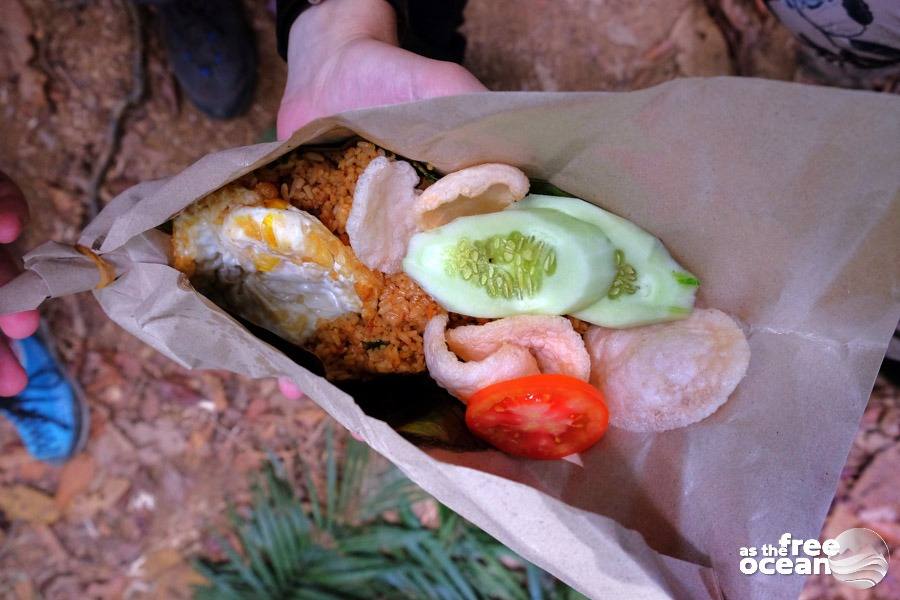
The guides not only answered our questions about the jungle and the animals, but also told us about Mina, an orangutan lady who usually reacted sensitively and aggressively towards people. She was held in captivity and was not well treated during that time. That day, however, she did not bother us and remained hidden in the jungle.
Camping in the jungle
When we arrived at the camp later in the afternoon, it started to rain. It was the perfect time for cooling down. Our camp was right next to a waterfall, where we freshened up before we were served some tea and cookies by our guides. It was nice to talk to the others in the group while finding shelter from the rain under a wooden roof.
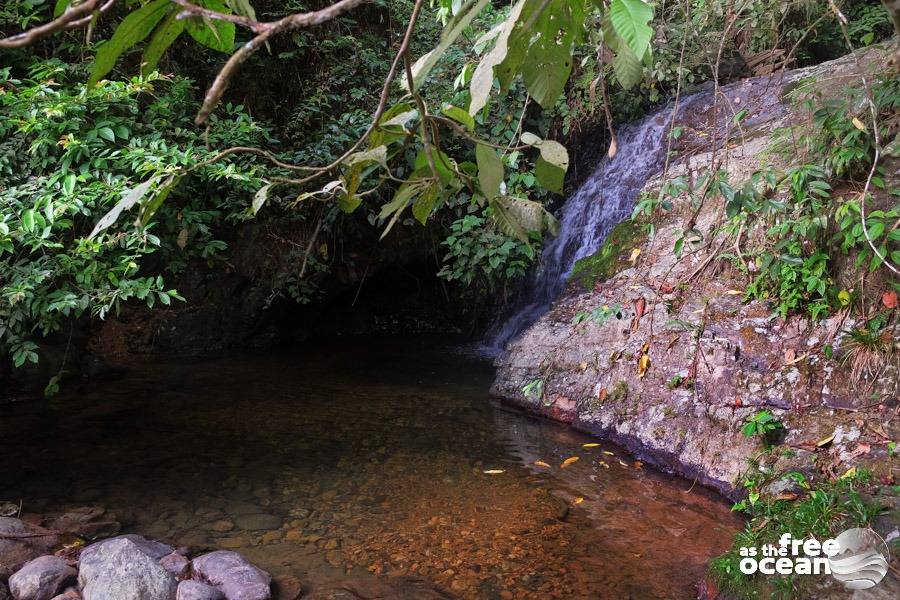
We could witness pure life taking over the place. Monitor lizards bathing in the river, monkeys hanging in the trees and little frogs hopping through the camp, all felt beautiful to watch accompanied by the sounds of the jungle.
The camp consisted of three “huts”, two served as a sleeping place and lounge, the third as a kitchen. Actually, they were not really huts, as their structure was quite simple and open to the front but offering a breathtaking view. The “beds” were just basic thin mats. Later we got a blanket, which we happily received as the air outside started to cool down rapidly.
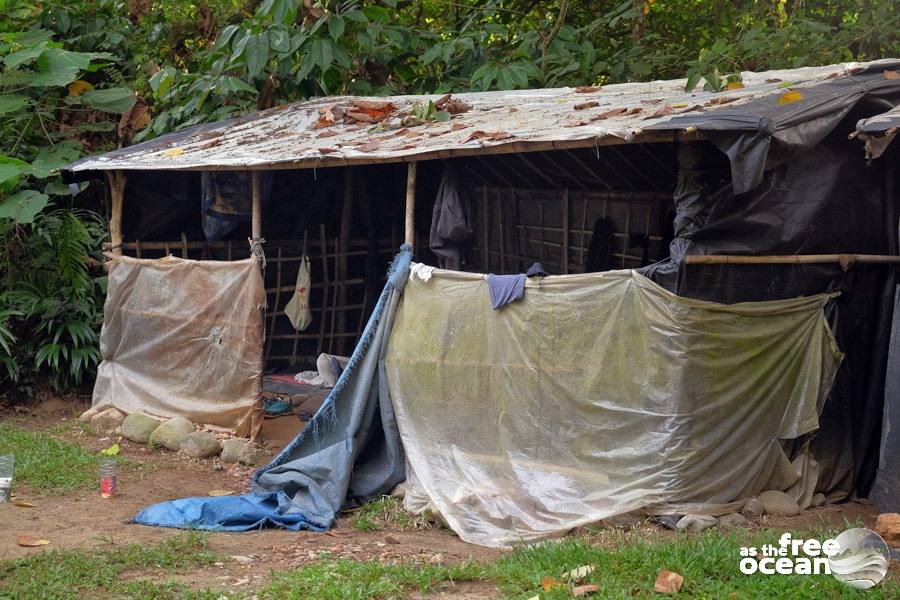
In the kitchen, which was a shelter with 2 fire pits, the guides prepared a delicious dinner. After the meal, we played a few games and had nice chats by the fire. We all had difficulties finding sleep on the hard floor but were also very exhausted after the long day.
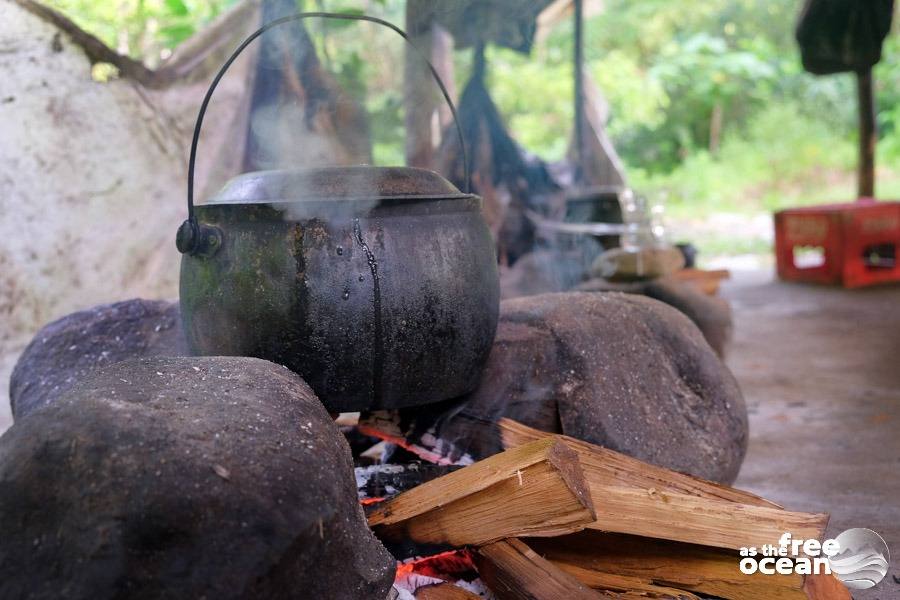
The next morning, I woke up very early, while the others were still asleep. I walked to the waterfall and watched the monkeys bathing next to me in the water. This was one of the most beautiful moments I ever experienced. The water was freezing cold but very refreshing at the same time and the silence of the morning allowed me to hear the clear sounds of the jungle.
After a truly sumptuous breakfast, we started our return journey. At this point the group was separated into two parts, as the two Englishmen continued their trek for another day in the jungle, while we returned to the village, accompanied only by Walli this time.
The walk was short and later we spent some time by the river, bathing, eating fruits and even got another chance to spot orangutans, before going down the stream with an inflated raft. The ride was indeed fun and entertaining.
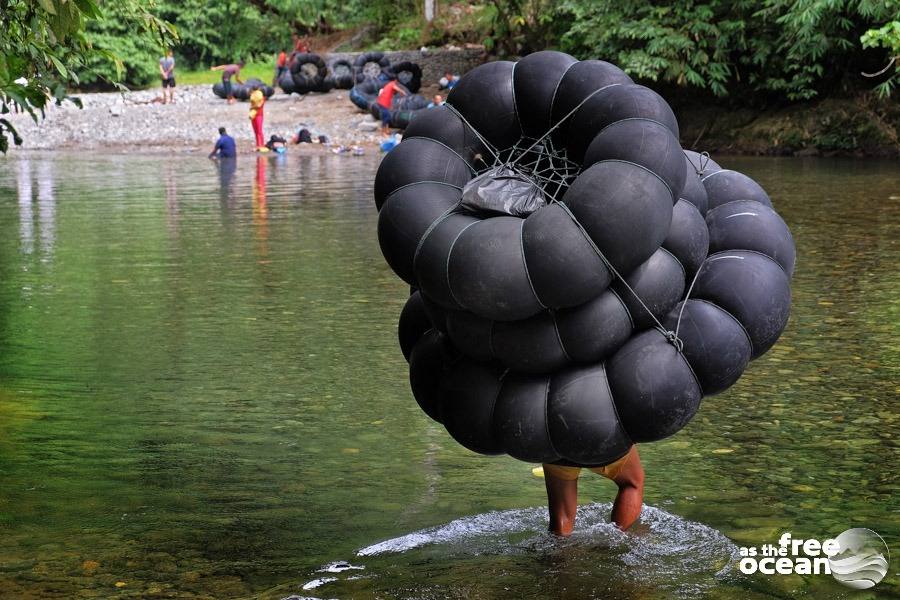
Unfortunately, the fun in the jungle ended with less fun back at the village. We found out that the hostel was still overbooked and that this time we had to look for other accommodation by ourselves. In the end, we decided to stay at the same hotel where we spent the first night, despite the higher price. It wasn’t easy to find last-minute accommodation at a lower price, considering that we were there during high season. Luckily the price for the remaining two nights at the accommodation did not affect much our budget and we could enjoy the last days by the river to the fullest.
In the following days, we planned our trip to Lake Toba, where we would meet again with our friends from Medan. Private or group transfers are easy to organize directly in the jungle. We joined a group of other 5 people with whom we traveled together in a minivan. Surprisingly we found out that some of them had the same problem as us with the same hostel. Apparently, the people at the hostel were scammers, trying to attract tourists into booking tours with them, but without carrying much for their enjoyment after the money have been paid. We were still thankful that the whole experience did not change our mood and we were glad it did not throw a bad light on our unforgettable jungle excursion.
Do you feel like going for a tour into the jungle? Find more inspiration in our pictures here.

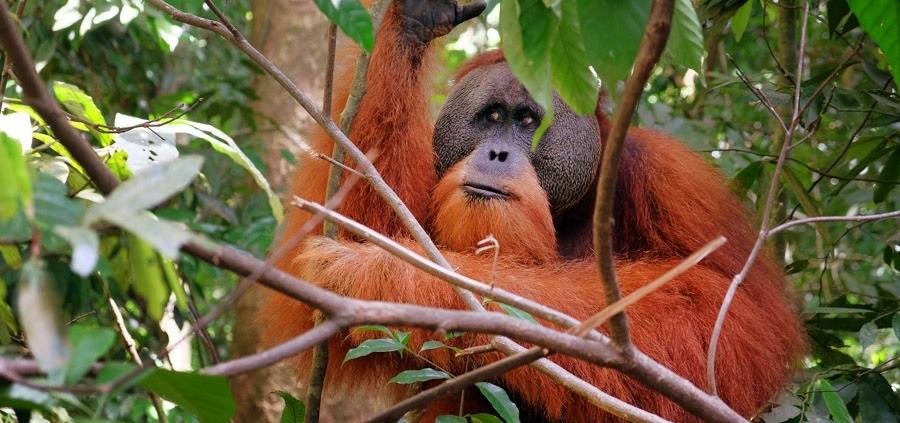

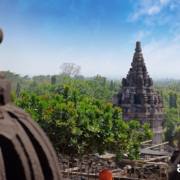
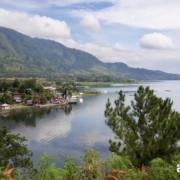
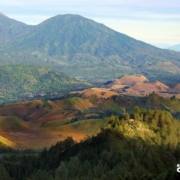

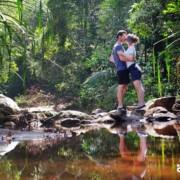


Leave a Reply
Want to join the discussion?Feel free to contribute!